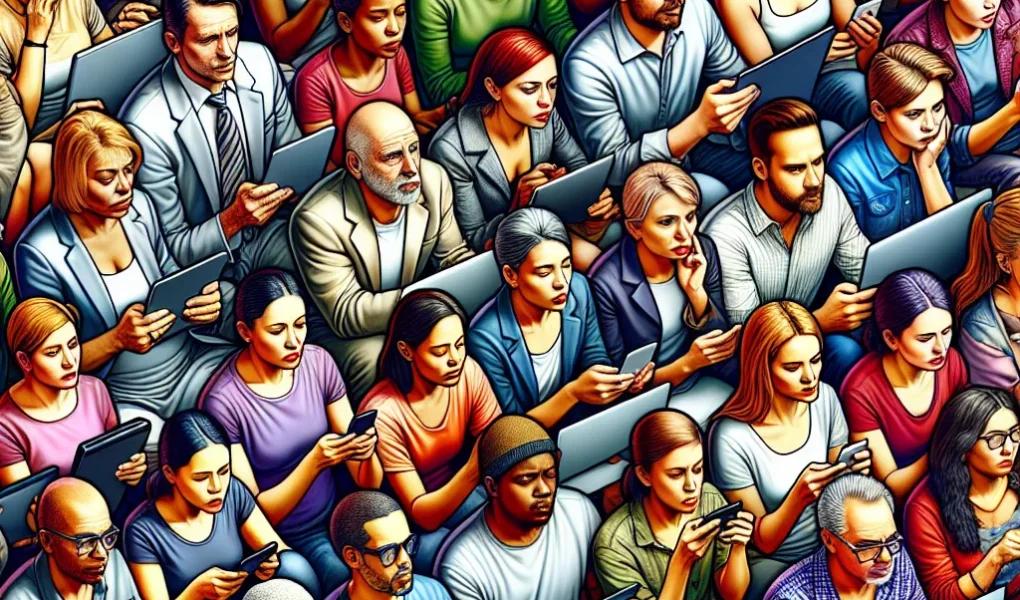From Television to Streaming: The Shift in Viewing Patterns
In the digital age, the way we consume entertainment has undergone a significant evolution, particularly in terms of how we watch television and other video content. The shift from traditional television to streaming services has had a profound impact on viewing patterns and habits.
With the advent of streaming platforms such as Netflix, Hulu, Amazon Prime, and others, viewers now have unprecedented control over what they watch and when they watch it. This has led to a fundamental change in viewing habits, as more and more people opt for on-demand, personalized content rather than adhering to scheduled programming offered by traditional television networks.
Furthermore, the rise of mobile devices and smart TVs has facilitated this shift, allowing users to access streaming services anytime, anywhere. This has resulted in a trend towards binge-watching, where people consume multiple episodes or even entire seasons of a show in one sitting, a behavior rarely seen during the era of linear television.
Additionally, the proliferation of original content produced by streaming services has also contributed to the changing landscape of viewing habits. Viewers are now drawn to compelling, high-quality series and films that are often exclusive to specific streaming platforms, further incentivizing the move away from traditional TV.
As a result, advertisers and content creators have had to adapt to these new viewing patterns, leveraging targeted ads and innovative storytelling techniques to engage audiences in the streaming environment. The shift from television to streaming represents a seismic change in how we consume video content, marking a new era in the evolution of watching habits in the digital age.
The Rise of On-Demand Content: Impact on Viewer Behavior
As the digital age continues to shape our daily lives, the way we consume content has undergone a significant evolution. The rise of on-demand content has had a profound impact on viewer behavior, reshaping the traditional notion of watching habits. With the advent of platforms such as Netflix, Hulu, and Amazon Prime, viewers now have unprecedented control over what they watch, when they watch it, and on which device.
This shift towards on-demand content has not only transformed the entertainment industry but has also influenced the way audiences engage with the media. Viewers are no longer bound by rigid TV schedules, allowing them to tailor their viewing experience to fit their busy lifestyles. Binge-watching, a phenomenon enabled by on-demand services, has become a widespread trend, with viewers consuming entire seasons of their favorite shows in a single sitting.
Furthermore, the availability of on-demand content has spurred a demand for high-quality, original programming, leading to a renaissance in the production of compelling narratives across various genres. This has not only diversified the content landscape but has also empowered creators to explore storytelling in innovative ways, catering to the evolving preferences of digital-age audiences.
Additionally, the rise of on-demand content has redefined advertising strategies, prompting brands to adapt their approach to reach consumers in an increasingly fragmented media environment. Marketers are now leveraging targeted advertising and product placement within on-demand content to connect with viewers who have grown accustomed to ad-free or skippable content.
In conclusion, the rise of on-demand content has undeniably revolutionized viewer behavior, fostering a culture of convenience, choice, and creativity. As technology continues to advance, it is certain that the way we consume content will continue to evolve, presenting both challenges and opportunities for content creators, distributors, and advertisers.
Adapting to Change: How Technology Reshapes the Way We Watch
In the digital age, the way we consume media has undergone a profound evolution, reshaping our watching habits in unprecedented ways. As technology continues to advance at a rapid pace, so do our preferences for how we engage with content. Adapting to this change is crucial for both consumers and content providers alike. The rise of streaming services, on-demand content, and mobile viewing has revolutionized the traditional television experience, allowing viewers to access their favorite shows and movies anytime, anywhere. This shift has not only altered the way we watch, but also the way content is created and delivered. The convenience and personalization offered by these technological developments have significantly influenced our viewing behavior, leading to a more fragmented yet tailored media landscape. As we navigate this constantly evolving digital frontier, it’s evident that technology continues to reshape the way we watch, challenging us to adapt to new platforms and formats in order to stay connected to the content we love.



